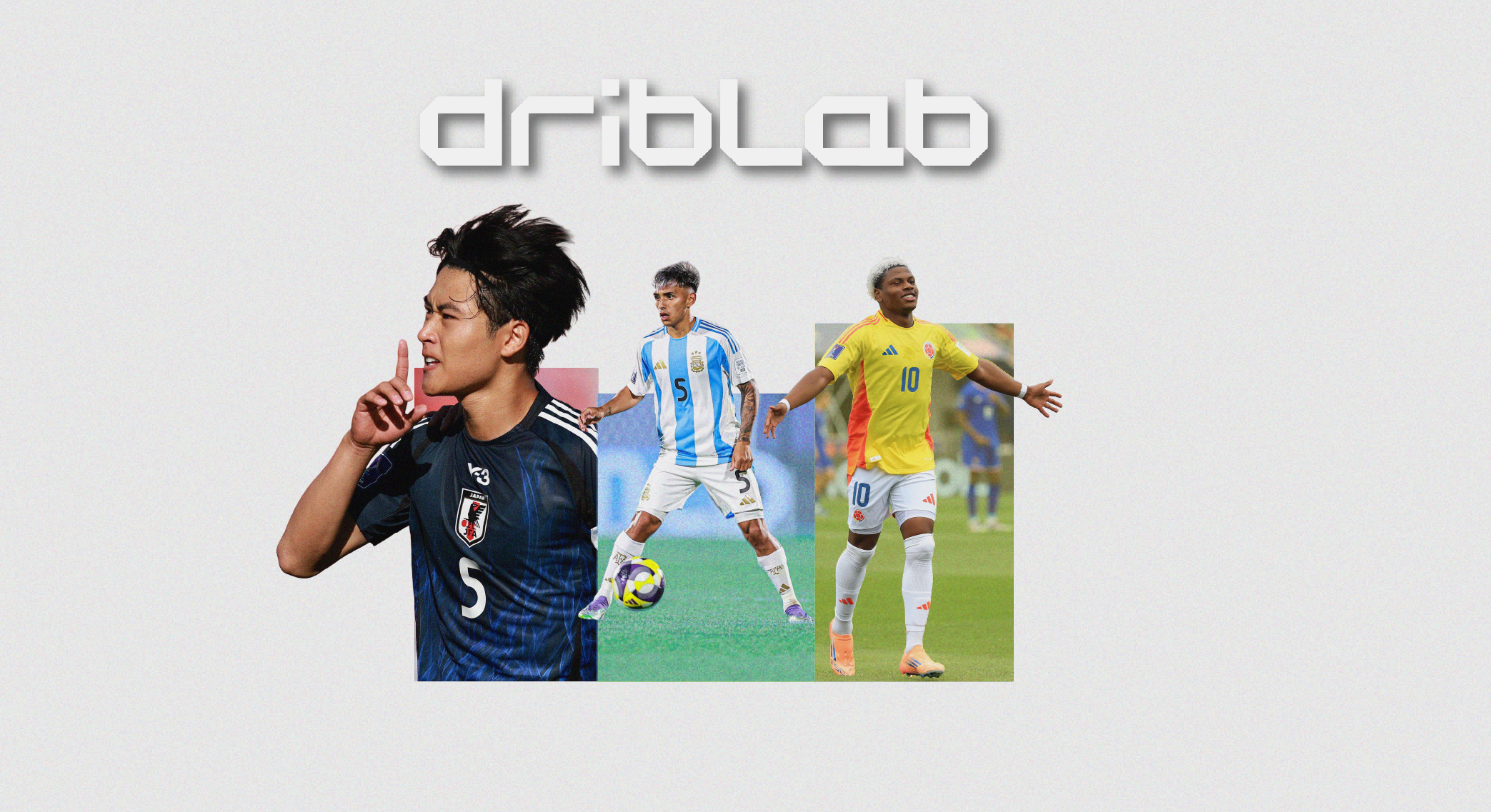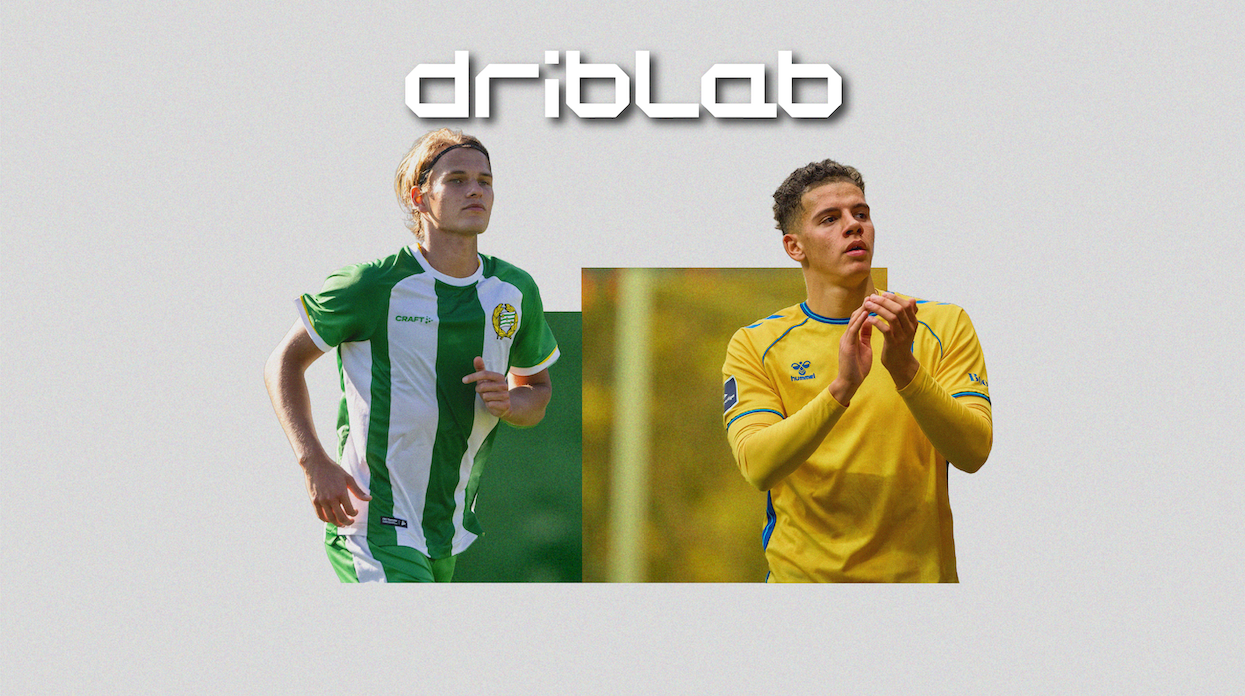It’s already become a classic each season, but our article on standout players you should know from the Jupiler Pro League and the Eredivisie always brings interesting profiles that allow us to dive deeper into their strengths and weaknesses. We always mix players who already generate some hype with others who are still under the radar.
A year ago, we wrote about some of the most interesting footballers who have since made the leap to the top tier of European football or have started to gain recognition as some of the most promising talents in their respective leagues. Among them were Joel Ordóñez, who came close to joining Olympique Marseille, and Antoni Milambo, recently signed by Premier League side Brentford.
Let’s start with this year’s names...

Nathan de Cat - RSC Anderlecht - 2008
Nathan De Cat is seriously young yet he’s already undroppable at one of Belgium’s biggest clubs. The Anderlecht midfielder, born in 2008, immediately stands out because of his height (1.92 m). He’s tall and lean, with an upright posture that he somehow keeps even when running at full speed.
If we are cautious and take a look at his radar from 992 minutes in the Jupiler Pro League, we can already see a few areas where De Cat performs above the league average.
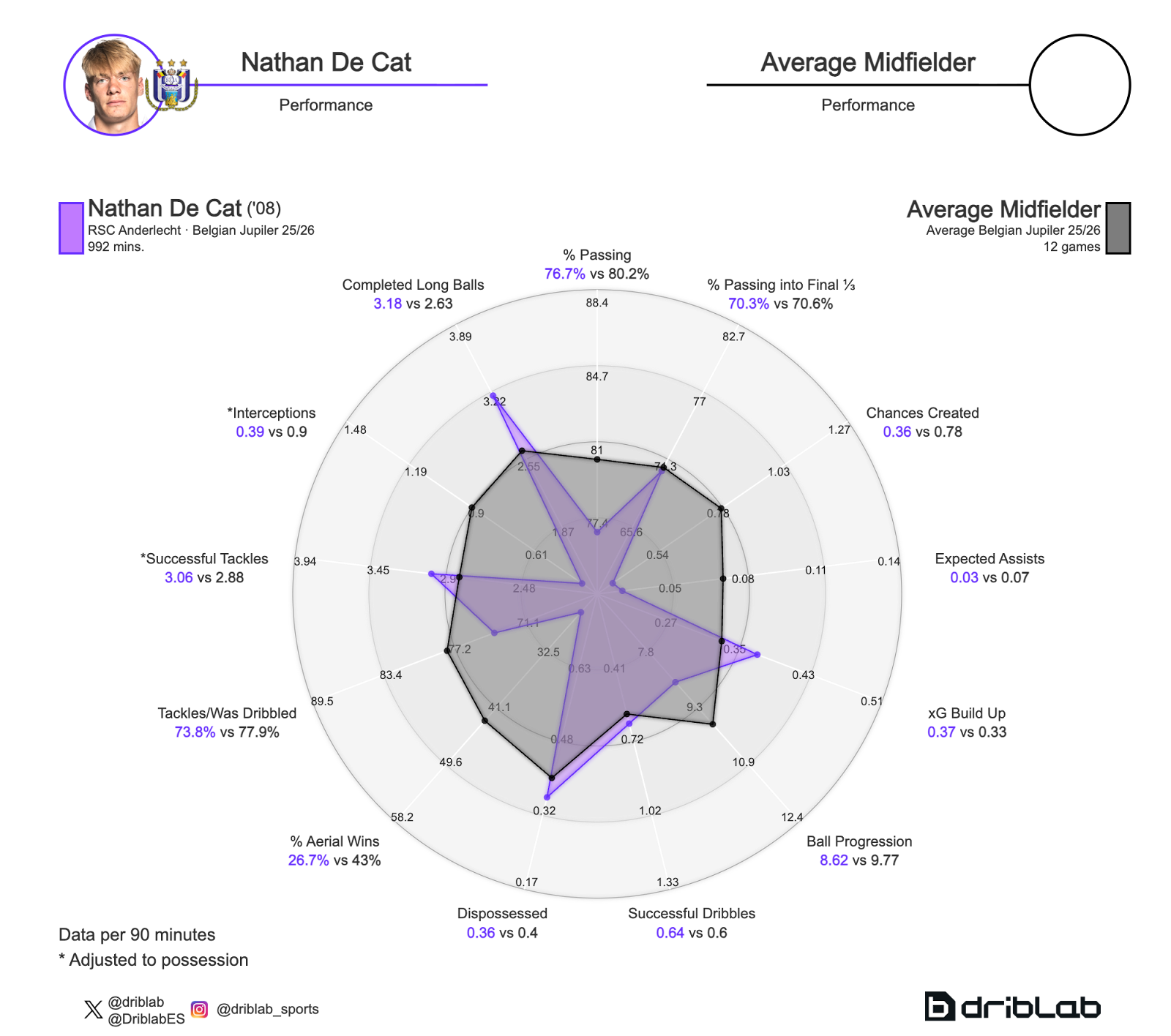
Strong numbers in tackling, ball retention, long passing, and involvement in dangerous build-up (xG in Build-Up) help sketch an early picture of a midfielder who has the tools to become complete. A player who could impact different phases of the game if he develops properly.
At just 17, De Cat is still learning how to move a body that seems premature for his age. But that same huge frame also gives him a couple of key advantages.
The first one comes from the length of his legs. De Cat generates a lot of power with minimal effort, which gives him great range and accuracy on long passes from almost anywhere on the pitch. Also, more often than not, De Cat chooses the right part of his foot for each pass: the inside when he wants more control, the instep when he wants a cleaner, flatter strike. Either way, he gets the ball to travel effortlessly. The inertia of his legs gives him the necessary power with little effort.
He averages 3.18 long passes per game (over 32 metres in any direction), completing 6 out of every 10. Only 10 midfielders in the Jupiler Pro League complete more long passes per match, and 59% don’t even reach his accuracy rate.
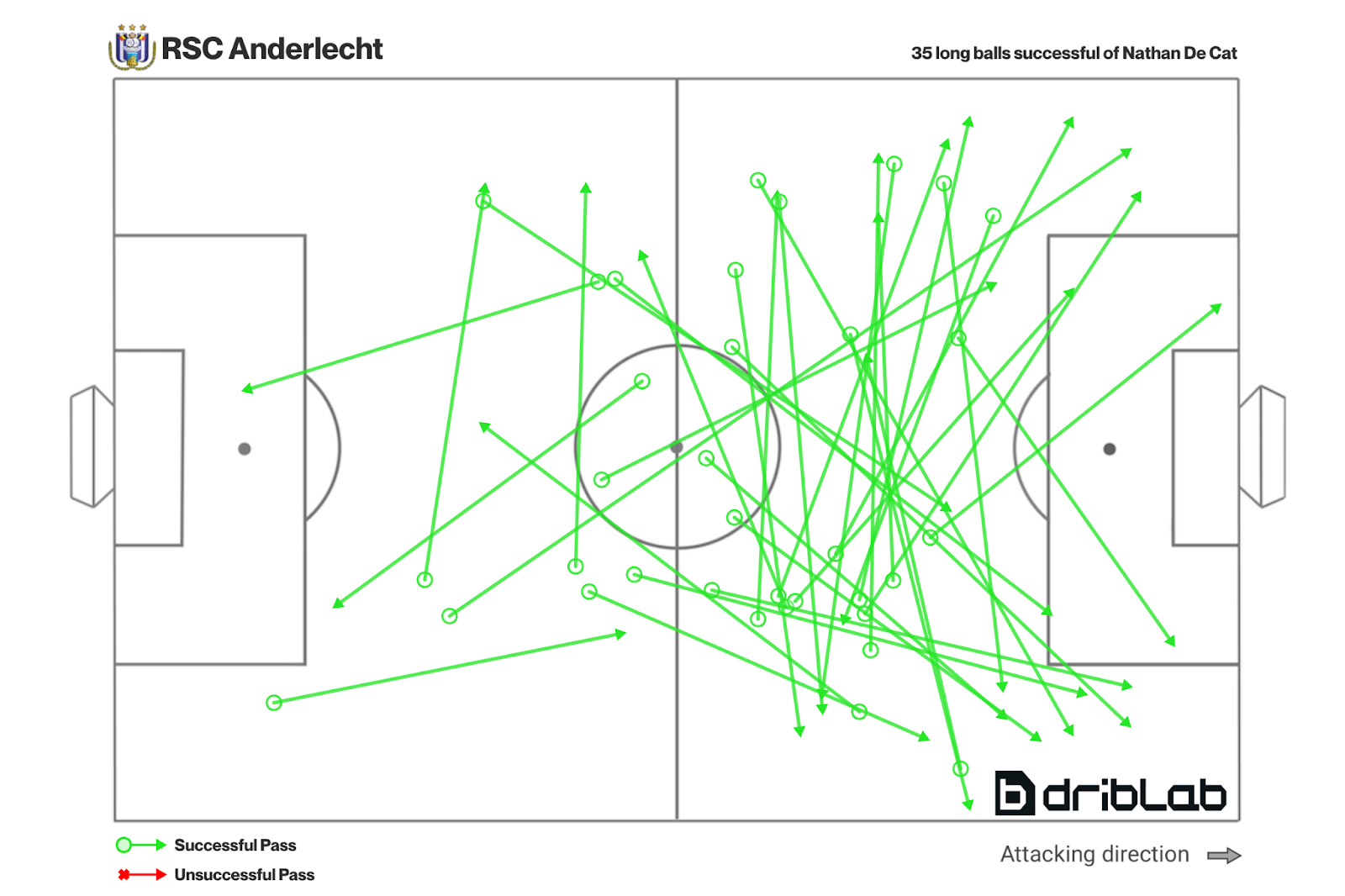
The other advantage of his physique comes when he’s chasing opponents who don’t demand too many changes of direction. He’s got the stride and strength to press and close down rivals effectively.
According to our Arrigo metrics for performance under pressure, De Cat excels in such situations. He ranks 9th among the league’s midfielders in medium-intensity pressures (8.78) and 3rd in strong pressures (8.42) per game.
Jordan Bos - Feyenoord - 2002
Before an injury ended his season early, Jordan Bos had already played 18 games in the Jupiler Pro League, scoring six goals and providing three assists. We’ll never know how far he could have gone, but Feyenoord didn’t wait to find out. They signed him and, from the first day, he has been a regular starter at left-back.
Bos, who has both Australian and Dutch roots, is 22 years old and one of the most interesting full-backs currently playing in the Eredivisie.
During his time in Belgium, Bos proved to be a full-back capable of tirelessly covering his flank. He ran up and down the flank, always available to support the attack. This season, however, his physical data radar looks quite different. That’s partly because of the status of his new club, but also because of a change in role.
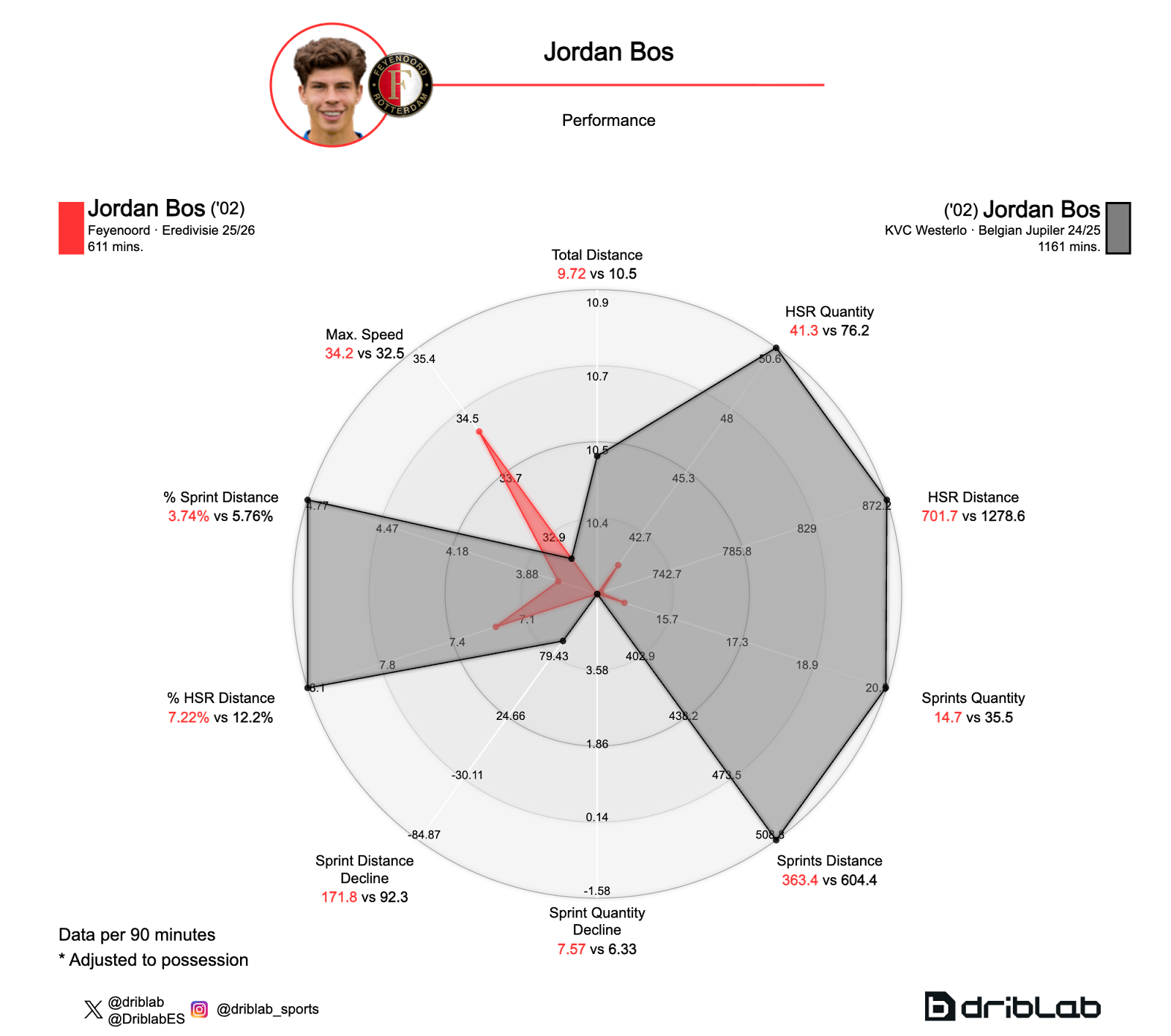
At Westerlo, he played in a team that spent more time defending than attacking, which meant more running, more sprints to join Westerlo's quick-and-direct attacks, and a lot more high-speed actions because of this last point. At Feyenoord, that’s no longer the case. As one of the league’s dominant teams, they control possession and rest more with the ball. Van Persie now asks Bos to act as a third centre-back in build-up and use his pace to stop counterattacks.
That shift explains why his defensive output has gone up so much. He’s the second full-back in the Eredivisie for successful tackles per game (6.16) and boasts the highest success rate in those actions (88%). He also ranks second in recoveries (5.04 per game).
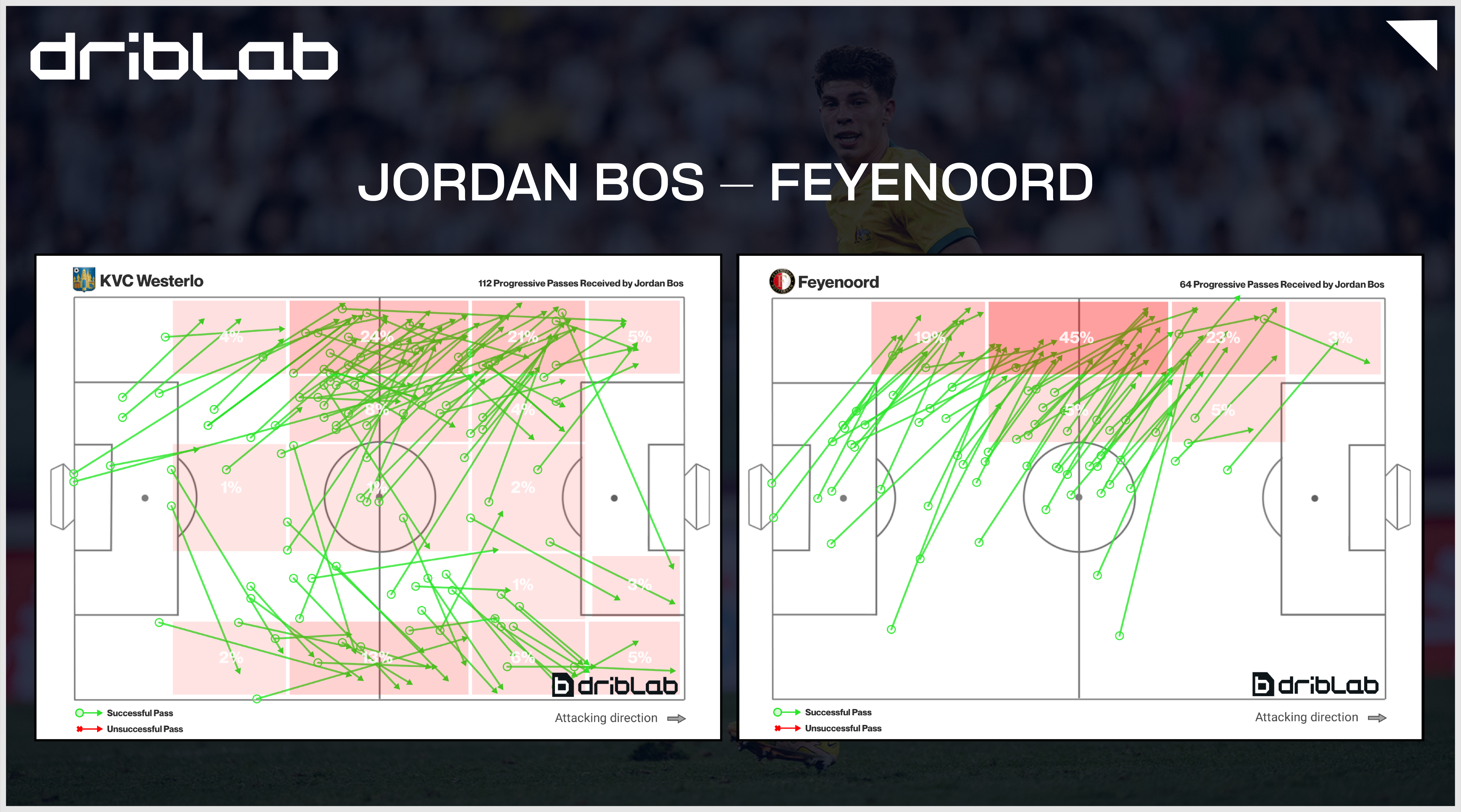
At the same time, even though Van Persie’s demands have changed his role, Bos continues to be a real weapon going forward. He creates more chances (1.25), progresses the ball forward more often (15.5 ball progressions), and contributes more to xG creation (0.68) at a rate better than 80% of Eredivisie full-backs.
At the same time, even though Van Persie’s demands have changed his role, the Australian international still has a big influence in attack. He creates more chances (1.25), progresses the ball forward more often (15.5), and contributes more to xG creation (0.68) than 80% of the Eredivisie’s full-backs.
Our Arrigo metrics also show Bos as an ideal player to bypass opponents both through passing and ball carrying. His 14.3 passes bypassing at least a player per game rank him third among full-backs in the league, and he’s 12th out of 38 in carries that bypassed players.
Kodai Sano - NEC Nijmegen - 2003
In July 2023, Kodai Sano was playing in Japan’s second division for Fagiano Okayama. That’s when NEC Nijmegen spotted him. In the first of three seasons he's already played in the Netherlands, Sano showed glimpses of promise, but this year he’s really taken a big step forward.

If we were talking about football five years ago, Sano would probably be on far more scouting lists. Being a small, slight midfielder who looks easy to push off the ball hasn’t exactly helped his reputation. Despite of this, Sano demonstrates above-average physical output. He covers 3.55% of his distance at sprinting speed (over 25.2 km/h) and 7.5% at high intensity (over 19.8 km/h). Sixty percent of Eredivisie midfielders with at least 450 minutes don’t reach those numbers. This is without saying that he is by no means easy to push off the ball.
Defensively, he’s extremely effective despite his well-known height. His overall reading of the game (not just defensively) and tackling technique puts him among the league’s best. He’s the midfielder with the most recoveries per game (6.6) and second in successful tackles (4.82). His tackle success rate of 8 out of 10 puts him above 83% of midfielders in the Dutch top flight.
With the ball, Sano is just as impressive. He keeps the ball close to his feet, his first touches are clean, and he can handle pressure whether facing forward or receiving with his back to goal. He adapts his game to all conditions.
.png)
On top of that, when he can see the play in front of him, he looks to beat opponents and put teammates in good positions. He ranks 7th among Eredivisie midfielders in players bypassed by passes per game (25.8).
When receiving under pressure from an opponent, Sano maintains a success rate of 8.4 out of 10 passes and 7.54 out of 10 under strong pressure, outperforming 80% of his positional peers.
Nacho Ferri - Westerlo - 2004
Nacho Ferri is huge. Really huge. Not just tall — he’s 1.92 m — but also has an incredible reach and physical presence. He often uses his size like a basketball player, holding off defenders, swinging his arms, and moving them just enough to protect the ball. He does not allow defenders to get round him.
Unlike some other players with a similar build, Ferri knows his limitations. While he can overpower a single opponent, he doesn’t have the speed to get past a second one. So he makes sure that when he dribbles past someone, the next action — whether a shot or a pass — comes immediately.

Nacho Ferri is exactly what you expect him to be. A striker with a huge frame who competes in many duels, wins numerous fouls for his team, is very efficient in the air, and is frequently sought out by his teammates in the opponent’s box. In addition, he does not participate much in his team’s overall play compared to other players in his position.
In short, a modern target man. A classic reference striker, but with greater mobility. We say this because Ferri is the third striker in the league in terms of the percentage of his distance covered at sprinting speed (4.91%).
After a loan spell at Kortrijk, where he gained experience despite the team’s relegation, Ferri has moved carefully to a team with more resources, yielding improved performance.
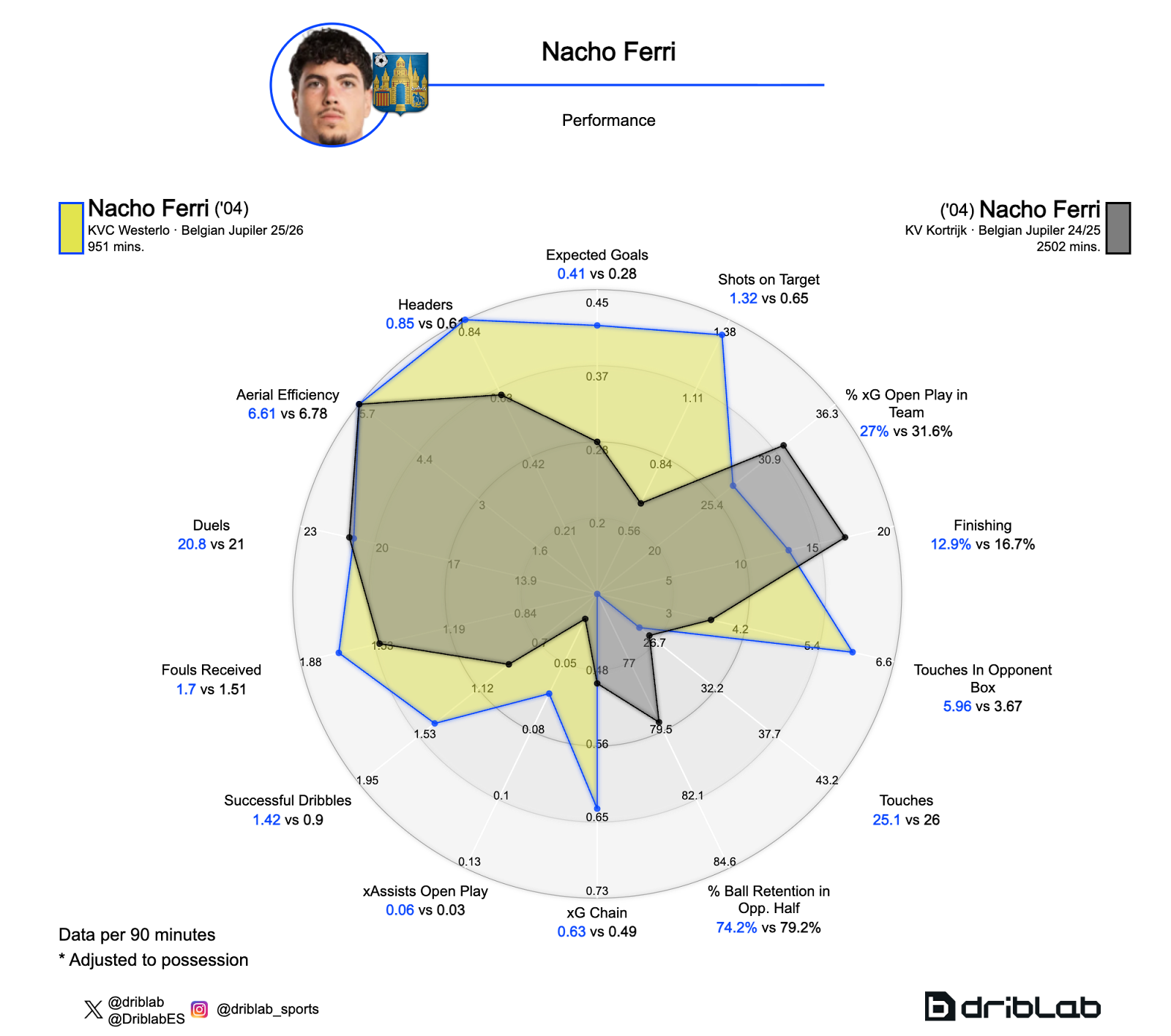
In his current role, he is involved more in attacking sequences: he takes more shots, enters the box more frequently, contributes to dangerous situations, and remains highly effective in aerial duels. He maintains his efficiency in physical duels, ability to win fouls, and overall influence in the attacking third.
Rio Hillen - NAC Breda - 2003
I’ll admit, I’m not sure Rio Hillen would have made this list if he wasn't left-footed. But he is, he’s a centre-back, and he’s a good player. A combination that is rare enough to notice.
At just 22 years old (born in 2003), Hillen is making his Eredivisie debut this season after four years in the Eerste Divisie, where he played an incredible 3,700 minutes last year.
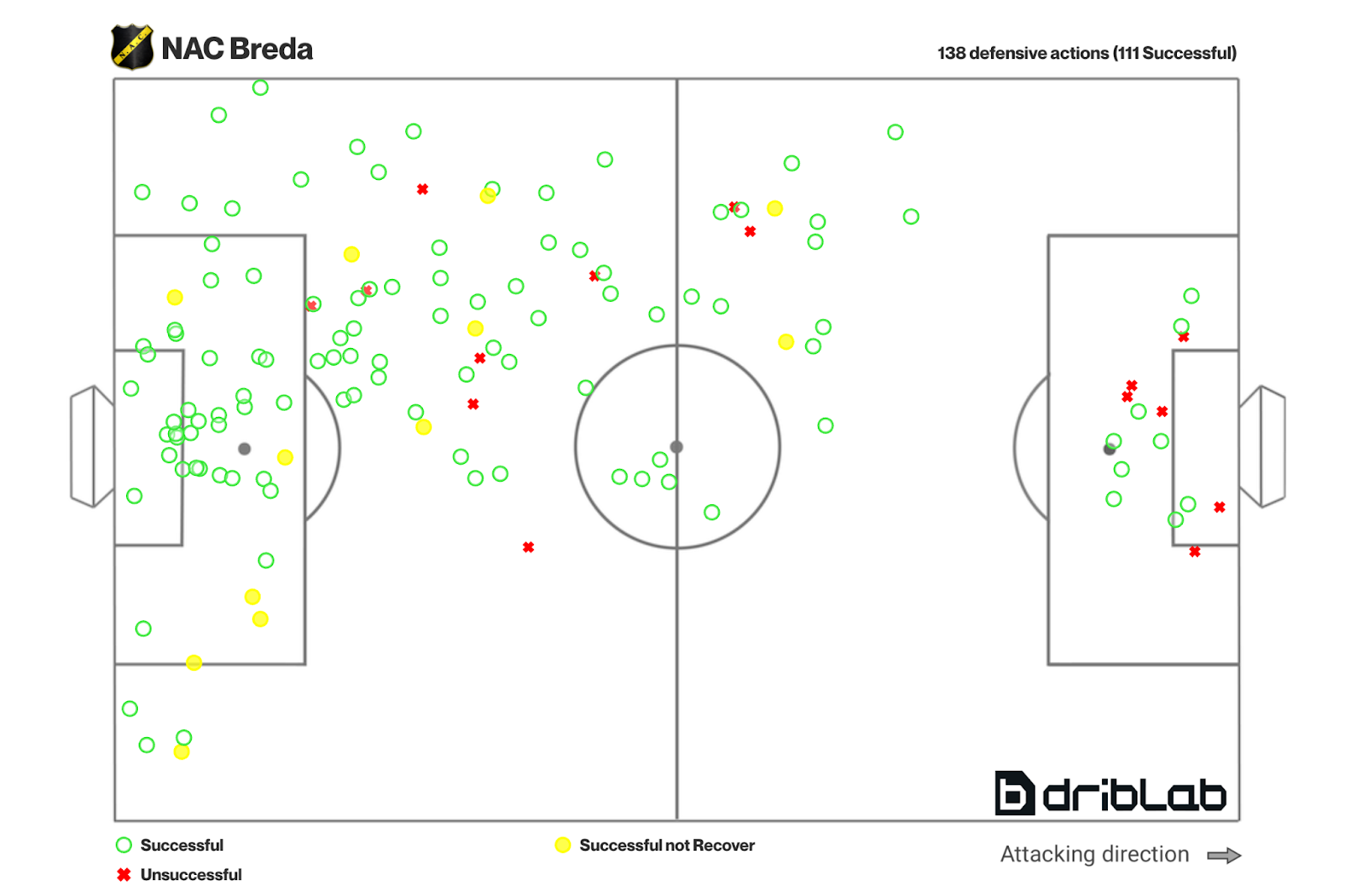
His numbers this season paint a picture of a defender who’s heavily involved in defensive actions. He ranks fifth in the Eredivisie for successful tackles, second for tackle success rate (91.8%), and wins 68% of his defensive duels (including aerials, tackles, and fouls committed), figures bettered by only three other centre-backs in the league.
Moving from De Graafschap to NAC Breda meant going from a team with high aspirations in a lower league to one that defends more and has less possession in a higher-level league. As a result, his offensive passing numbers have dropped.

But Hillen’s passing foundations remain solid despite the change in style from one team to another. He attempts fewer passes under all types of pressure, yet his accuracy remains the same or even better. For instance, his pass completion under pressure has increased from 76% to 85.7%.
We've talked about passing under pressure, but with his risk-taking ability something similar happens: he’s also maintained more or less the same number of line-breaking passes. He's dropped from 4.09 line-breaking passes per game to 3.78. A marginal change. Also, this season, he's attempting a pass that breaks lines every 10.1 passes, slightly more frequently than last season, when he needed 11.4 passes to achieve the same.
I’d love to see him take more risks, but it’s worth noting that opportunities to beat opponents depend on his team’s possession percentage and the league’s difficulty — both of which have changed for him this season.


